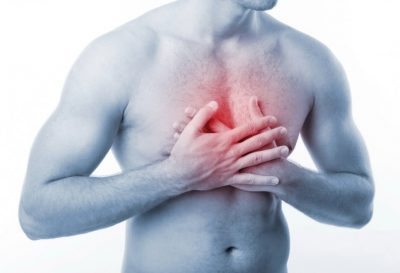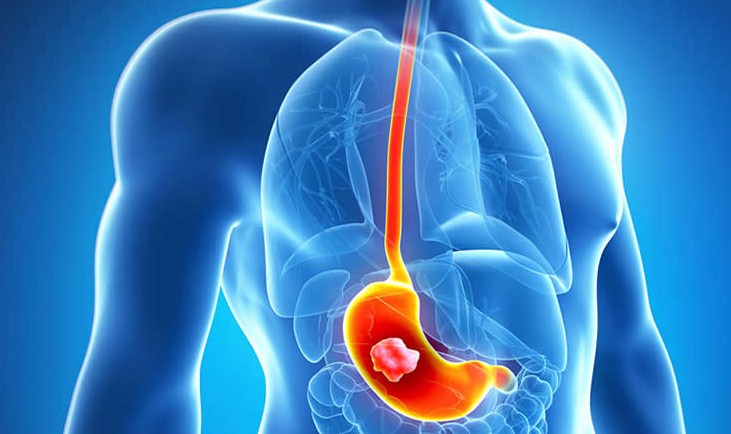What is the xiphoid process of the sternum?
What is the xiphoid process of the sternum? The doctor to whom the patient should consult for advice will tell about this.
If a person experiences discomfort in the chest area, especially with pressure, it can hurt the xiphoid process of the sternum. For an accurate diagnosis, it is worth visiting a specialist.
Essence of the question
What is it - the xiphoid process of the sternum? This is the smallest part of the bone, which can be of different size or shape, have a forked top or a small hole in the middle.
In the upper, lateral part of the process, there is a small notch connected to the cartilage of the seventh rib. This element is connected to the body in a stationary state, at the point of contact the bones have hyaline cartilage.
With aging of the body, the process fuses with the thoracic part of the body.

Why does pressure pain occur?
If a person has noticed uncharacteristic pain effects in the chest area, especially when pressed, this may indicate various kinds of diseases that are associated with damage to organs in the chest part of the body or a nearby area.

These bodies are:
- stomach;
- gallbladder;
- heart.
If the disease is associated precisely with these organs, then a person may experience pain not only when pressing on the xiphoid process, but also at the slightest tension of the body, and also after each snack.
There are other causes of the disease. For example, sliding costal cartilage, which is formed due to serious injuries. At first, a person will experience very severe pain in the chest area, but after a while it will disappear and will only appear when pressure is applied to the process. In such cases, the pain will be dull in nature.
Very often, a person has an erroneous opinion that the disease has passed and he is healthy, so a visit to a specialist is postponed. But if you do not get a consultation from a therapist in time, a person runs the risk of earning inflammation of the xiphoid process. Therefore, it is advisable to contact the clinic in any case.
The gastrointestinal tract is another cause of pressure pain. If a person has a stomach ulcer, inflammatory processes can spread to fatty tissue and reach the chest area. In this case, you can observe symptoms such as:
- nausea, vomiting;
- loss of appetite;
- heartburn, etc.


Hernia of the xiphoid process
The cause of pain in the sternum when pressed can be a hernia of the xiphoid process. As a rule, its development is influenced by a hereditary factor or a severe injury. The xiphoid process is able to have several holes closed by a fibrous plate. For the above reasons, it may not be available. Then, internal, closely spaced organs (fatty tissue or elements of the peritoneum itself) begin to seep through the hole. Preperitoneal lipoma develops. A true hernia of the xiphoid process is a rare disease.

The symptoms of the disease are as follows:
- pain in the chest;
- uncharacteristic bulging at the site of the xiphoid process;
- on palpation (palpation), the contents of the hernial sac are felt;
- when repositioning, the hard edges of the hernia gate are felt.
If the patient observes similar symptoms, it is likely that he has a hernia of the xiphoid process. For an accurate diagnosis, it is important to visit a specialist and undergo appropriate diagnostics, including x-ray examination.
A hernia of this type can only be cured by surgery. Before the operation, the patient is prescribed a differential examination to clarify the diagnosis, since such symptoms are inherent in a number of pathologies. Quite often, doctors have come across cases where a hernia was disguised as ailments of other organs, such as heart disease, ulcers, gastritis, or angina pectoris.

The operation to remove a hernia is considered simple. The surgeon processes the bag, suturing the gate of the opening of the xiphoid process. Organs that have fallen into it are subjected to arthrotomy. The doctor detaches the process from the chest, making an incision about 9 cm.

Other pathologies
Rupture of muscles in the anterior region of the peritoneum can lead to the occurrence of uncharacteristic seals. Very often, the causes of this condition are severe injuries that provoke the development of a tumor. For the study, the doctor prescribes certain tests, listens to the patient's complaints and conducts an examination. Based on the obtained results, the neoplasm treatment tactics is chosen.
In medical practice, there is such a pathology as xifoidalgia. This disease has a second name - xiphoid process syndrome. It manifests itself in the defeat of organs that have a joint supply (innervation) with the process. These include:
- diaphragm disease;
- ulcer;
- damage to the lymph nodes, etc.
In such cases, patients, as a rule, do not hurt the xiphoid process itself, but the area behind it.
In some situations, the patient may experience some tightness in the throat and bouts of nausea. The pain is aching in nature, can intensify over time and last for several hours. Also, a person can aggravate discomfort with movement or plentiful food.

All patients with xifoidalgia have impaired posture. It can be subtle or very pronounced. As mentioned earlier, pain associated with the xiphoid process is easy to confuse with another. So, for example, xiphoidalgia must be differentiated from pathologies associated with:
- with pain in the heart;
- with the digestive system;
- with lungs.
The syndrome of the xiphoid process can have versatile symptoms. Treatment measures are started only after an accurate diagnosis. Sometimes this can be quite difficult to do.
To identify pathology, the patient undergoes:
- radiography of the lungs and spine;
- FGS of the stomach;
- in some cases - MRI.
In some cases, the patient is referred for an examination, which includes a complete blood count, OAM (general urinalysis); fluorography, etc. Thanks to this diagnosis, the specialist has the opportunity to see a more accurate picture of the patient's health status, the presence / absence of pathological flaws and the location of the disease, if any.
Specialists recommend a certain method for the treatment of xiphoid process syndrome, which the patient is able to apply independently. To begin with, it is important to change the position and sit in such a way that the back is straightened in the chest area (straighten the shoulder blades). At the site of the pain syndrome, pieces of ice wrapped in a kitchen towel should be applied for 10 minutes.
When xiphoidalgia can not be carried out:
- 1. Traction of the spine.
- 2. Gymnastic exercises that can lead to other diseases. It is better to master the exercise therapy of Professor A. Sukhoruchko, designed specifically for the treatment of the xiphoid process syndrome.
- 3. Straightening the spine on your own.
All this can only increase the pain syndrome. It is worth considering that discomfort with xifoidalgia cannot be soothed with the help of Novocain, Baralgin, Ketorol and other painkillers. Such pathologies can be cured by a manual therapist.
